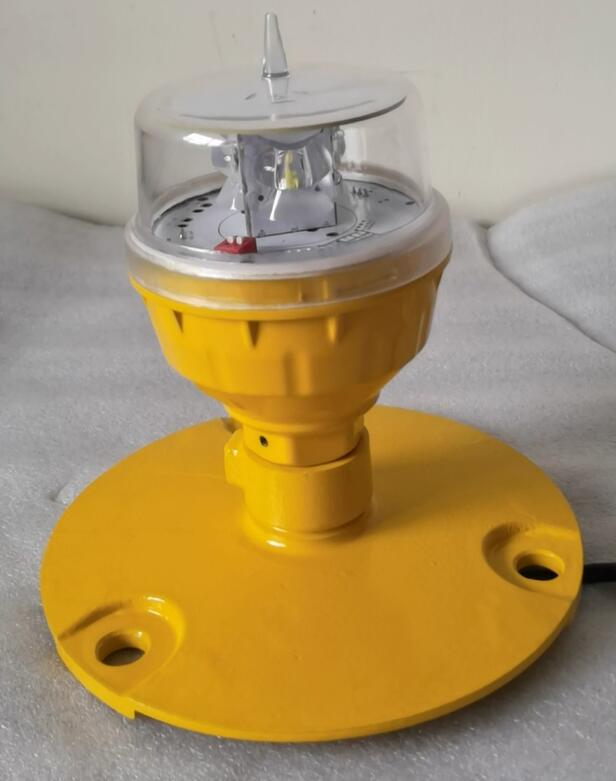A helipad elevated light is an essential component in aviation infrastructure, ensuring clear visibility for pilots during approach, landing, and takeoff. Used in hospitals, high-rise buildings, offshore platforms, and private helipads, these elevated lights improve safety in low-light and adverse weather conditions. With technological advancements, modern helipad elevated lights offer improved durability, energy efficiency, and compliance with international aviation standards.
Importance of a Helipad Elevated Light
1. Enhanced Visibility for Pilots
Helipad elevated lights provide critical guidance for pilots, especially in nighttime operations or poor weather conditions. Their elevated positioning helps reduce obstructions and improves depth perception during landing.

2. Compliance with Aviation Regulations
To maintain safety and operational efficiency, helipad lighting, including elevated lights, must meet standards set by the Federal Aviation Administration (FAA) and the International Civil Aviation Organization (ICAO). These regulations define light intensity, color, and placement requirements.
3. Increased Safety and Operational Efficiency
Properly installed helipad elevated lights ensure that pilots can easily identify landing areas, reducing the risk of accidents. They also enhance visibility for ground personnel working near the helipad.
| helipad elevated light |
| helipad elevated lights |
Key Features of a High-Quality Helipad Elevated Light
1. High-Intensity LED Technology
LED-based helipad elevated lights offer superior brightness, energy efficiency, and longevity compared to traditional halogen or incandescent lights. They also provide better performance in foggy or rainy conditions.
2. Robust and Weather-Resistant Design
As helipad elevated lights are exposed to harsh environments, they must be constructed from corrosion-resistant materials and have waterproof ratings of IP65 or higher to ensure reliable performance in extreme weather conditions.
3. Optimal Height and Placement
The elevated position of these lights helps prevent obstructions and ensures optimal visibility from various angles. Proper spacing and height adjustments enhance safety and compliance with aviation regulations.
4. Energy Efficiency and Sustainability
Many modern helipad elevated lights are equipped with solar panels and energy-efficient LEDs, reducing power consumption and making them ideal for remote locations without a stable power supply.
Types of Helipad Elevated Lights
1. Perimeter Elevated Lights
These lights define the boundary of the helipad, ensuring pilots can identify the landing zone from a distance. They are often green or white and placed at regulated intervals.
2. Approach Elevated Lights
Positioned along the approach path, these lights provide guidance for helicopters as they descend, improving depth perception and spatial awareness.
3. Wind Direction Indicator Lights
Illuminated wind socks or wind direction indicator lights help pilots assess wind conditions before landing, enhancing safety in changing weather conditions.
4. Obstruction Lights
Used to mark obstacles near the helipad, obstruction lights emit flashing or steady red lights to warn pilots of potential hazards.
Choosing the Right Helipad Elevated Light
1. Consideration of Environmental Conditions
Selecting a helipad elevated light with weather-resistant features ensures durability in extreme conditions such as heavy rain, strong winds, and high humidity.
2. Compliance with Safety Standards
Always choose lighting solutions that comply with FAA and ICAO guidelines to ensure the highest level of safety and operational efficiency.
3. Power Source and Installation Requirements
Depending on the location, solar-powered or wired options may be preferable. Solar-powered helipad elevated lights are particularly useful in remote areas where consistent electricity supply is a challenge.
4. Maintenance and Cost Efficiency
LED-based solutions with modular designs help minimize maintenance costs and extend operational longevity, reducing the need for frequent replacements.
Future Trends in Helipad Elevated Light Technology
1. Smart Lighting Control Systems
Advanced helipad elevated lights are now integrating remote control and automation features, allowing real-time adjustments based on visibility conditions and operational needs.
2. Wireless and IoT-Enabled Solutions
Wireless technology and IoT integration enable operators to monitor and manage helipad lighting remotely, improving efficiency and reducing manual interventions.
3. Adaptive Lighting Technology
Upcoming innovations include adaptive brightness settings that adjust light intensity based on ambient lighting conditions, optimizing power usage while maintaining safety.
A helipad elevated light is an essential investment in aviation safety, providing enhanced visibility and regulatory compliance for helicopter operations. With advancements in LED technology, smart controls, and energy efficiency, these lights continue to evolve to meet the growing demands of modern aviation. Whether for commercial, emergency, or private use, selecting the right helipad elevated light ensures safe and efficient landings in all conditions.